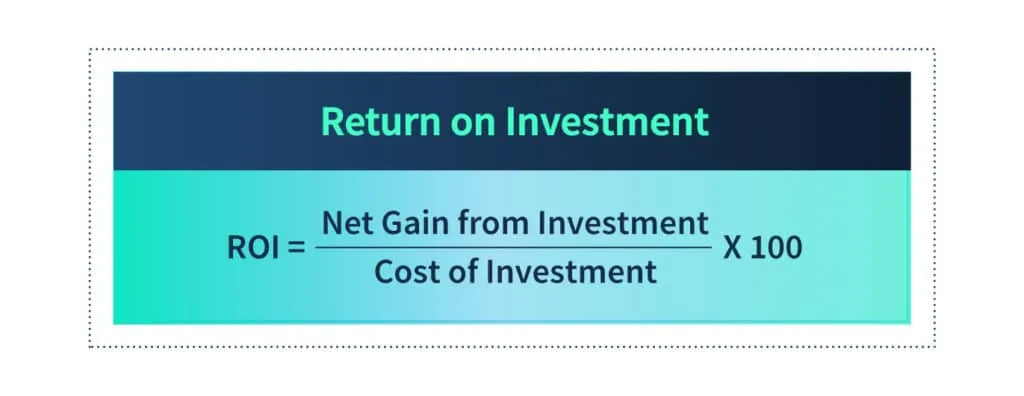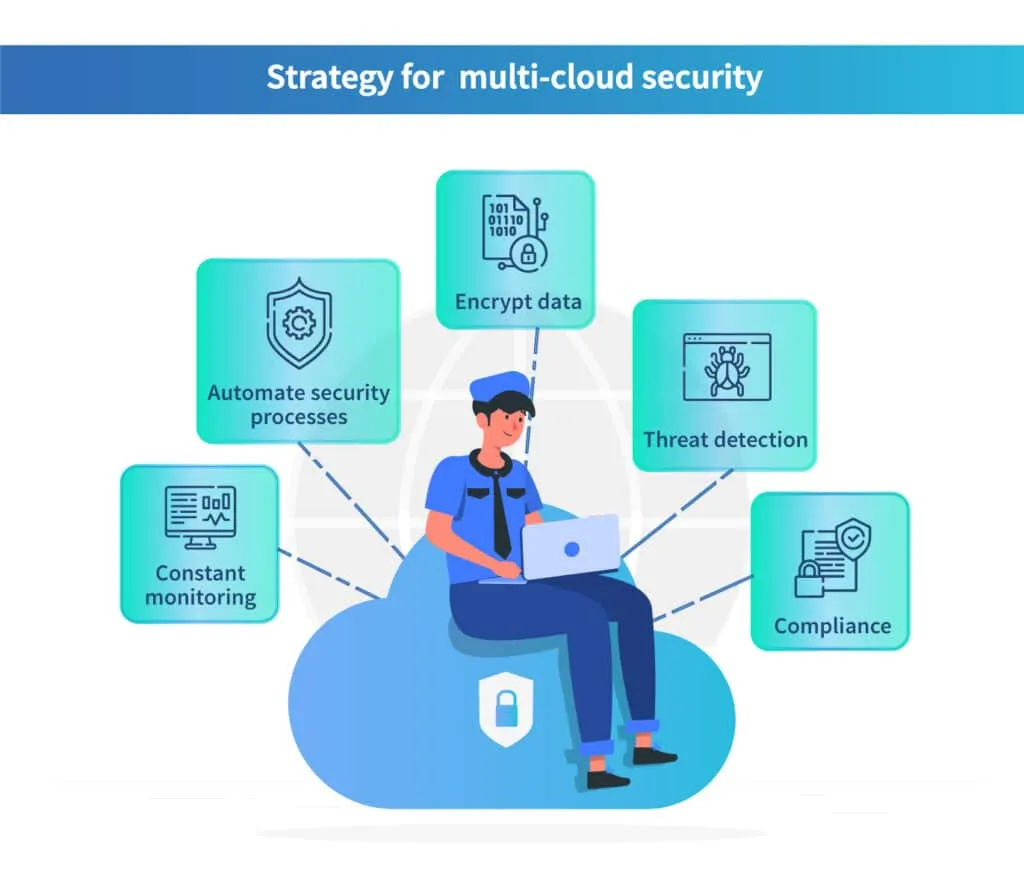How to Create Strong ROI for Multi-Cloud Solutions Using Security and Compliance?

Multi-cloud solutions have revolutionized the way organizations store their data. They enable companies to use cloud services from two or more vendors, help boost IT flexibility and agility, and also support cost optimization, among other things.
But with great advantages come great responsibilities. Since multi-cloud solutions use multiple cloud environments, they increase the attack surface of an organization.

Thankfully, security and compliance can come to the rescue and help an organization secure its multi-cloud architecture.
In this blog, we will explore how security and compliance can not only help protect organizations that use multi-cloud solutions but also highlight how they can help create a strong return on investment (ROI).
What are multi-cloud solutions?

A multi-cloud solution refers to an organization’s use of cloud computing services from two or more vendors to run its applications. It allows organizations to choose from multiple services and pick the best cloud stacks that cater to their needs.
Single cloud solutions, on the other hand, rely on only one vendor to cater to all their needs.
What are the advantages of using multi-cloud solutions?

Multi-cloud solutions help companies avoid vendor lock-ins, wherein an organization is tied down to one vendor and is forced to contend with its prices and availability. By using a multi-cloud solution, organizations can choose the best cloud service provider for every application.
They facilitate flexibility by allowing companies to choose cloud stacks based on cost, scalability, and necessity. By using multiple cloud solutions, organizations can distribute workloads across the cloud architecture and boost efficiency. They can also scale up or down without spending on physical infrastructure.
Multi-cloud solutions enable companies to pick the most cost-effective provider for each workload and avoid paying for services that are not necessary.
Since they distribute workloads across multiple cloud providers, if one cloud faces a disruption, its workload can be shifted to another cloud provider. This ensures a smooth operation that is quick to recover from any disruption.
Multi-cloud solutions also optimize operational performance and customer service due to their data-driven analytics. Data stored on clouds are easy to analyze and offer valuable pointers that help improve operations and customer service.
Multi cloud security solutions are also available to help protect data and applications across multiple clouds. However, its implementation is challenging, and a lot of work has to go into understanding what is necessary. Setting it up is a time and resource-intensive process.
Do multi-cloud solutions increase vulnerability to threats?
Multi-cloud solutions can be great investments that generate good returns since they boost a company’s efficiency and help it achieve its business goals with ease thanks to their flexibility, scalability, and agility.
However, this ease that comes as a result of using cloud services from different providers also results in vulnerabilities. There is a need for adequate security and compliance measures to ensure that the data and applications stored in the cloud are protected from cyber threats and comply with regulatory requirements.
Keeping on top of all these requirements is not easy, to say the least. Overall, multiple clouds result in a greater need for attack surface management.
Hence, It is important for organizations to incorporate security and compliance considerations while calculating ROI on multi-cloud solutions. This helps assess its overall risk profile.
How can security and compliance help create strong ROI for multi-cloud solutions?
ROI is a financial metric that evaluates the profitability of an investment. It compares the amount of return generated by an investment to its cost.

By improving its security and compliance posture, an organization can effectively protect its multiple clouds and also create strong ROI. Why do we say so? Here are four reasons why implementing a security strategy will help you maneuver multi-cloud environment vulnerabilities and generate ROI.
Data Protection
Data is the most precious asset of any organization. It is crucial for organizations to protect their sensitive data from unauthorized users. Multi-cloud solutions store a lot of data in multiple clouds, which increases the surface area of data breaches. Due to this, security measures such as encryption, access controls, and firewalls have to be implemented to ensure that the data is protected.
Compliance with leading industry standards
It is mandatory for organizations to adhere to certain standards to prove that they are secure and compliant. Based on their industry and location, organizations have to comply with regulatory standards such as HIPAA, PCI DSS, and GDPR, which require strict data protection measures.
Failure to comply with these regulations can lead to the payment of hefty fines, loss of reputation, and even loss of license. An organization that uses multi-cloud solutions may operate smoothly and make great strides in business, but if it doesn’t maintain compliance, it is not likely to succeed for long.
Trust
Organizations have to keep their data secure and comply with regulations in order to gain the trust of their customers and stakeholders. It is vital to build this trust in a multi-cloud environment by implementing adequate security measures to ensure data confidentiality, integrity, and availability.
Risk Management
Since multi-cloud solutions can increase the complexity of a company’s IT infrastructure, they can simultaneously increase the risk of security breaches. Organizations thereby have to implement security and compliance measures to manage this risk and protect their data from potential breaches.
Steps to follow for boosting security and compliance in multi-cloud solutions
Now that we’ve established the importance of security and compliance in organizations that use multi-cloud solutions, let’s take a look at some steps that help boost security and compliance in such organizations.
Analyze your business requirements
The first step to securing a cloud environment is to understand what is necessary for business and what isn’t. An organization can determine whether a multi-cloud solution is of use by seeing if it aligns with its business objectives. If a multi-cloud solution does make business sense, then its potential risks should be assessed before it is implemented. If its benefits outweigh its risks, then it may be a good idea to use the solution.
When companies do not analyze and assess the need for multiple clouds properly, it results in a pileup of tech stacks that are hard to monitor and expensive to maintain. It becomes a case of too many cooks spoiling the broth.
Carry out cloud assessments
It is important to carry out cloud assessments regularly to determine where areas of vulnerability lie. Cloud assessments help figure out how to go about implementing security measures to protect the cloud environment. It also helps to determine if workloads need to be shifted to different clouds for better operation. Regular cloud assessment is necessary to manage and implement security for multi-cloud environments.
Devise a security strategy

Security should be at the center of an effective multi-cloud strategy. After security requirements are assessed, data monitoring, protection, threat detection and prevention, access controls, and compliance should be taken care of in order to ensure security across clouds. Security has to be implemented at every layer of a cloud stack in order to meet business objectives.
Review security strategy regularly
Multi-cloud solutions are dynamic. They evolve constantly, which is what makes them technologically advanced and innovative. But this also means that organizations that use multi cloud solutions have an ever-changing attack surface. This requires their security strategy to be reviewed and revised constantly to protect any new area of vulnerability that arises.
A strong security posture requires security and compliance requirements to be reviewed and revised regularly.
Maintain compliance
Complying with regulatory requirements is important to avoid being fined. It also protects the reputation of an organization. For instance, all fintech companies are required to adhere to PCI DSS to avoid being penalized. Maintaining compliance also helps in carrying out useful security measures regularly and is a necessity for gaining the trust of customers.
Make use of automation
Multi-cloud environments are complex due to the use of multiple clouds provided by multiple vendors. Monitoring the clouds is a laborious task. The use of automation can help by constantly monitoring the cloud environment and preventing threats. It helps streamline security processes such as patching and data backups. It also facilitates configuration management.
Automated tools help in monitoring the cloud environment in real-time and predict security threats by analyzing data constantly.
Conclusion
Multi-cloud solutions are increasing in popularity, and justifiably so. Their cost-effectiveness, flexibility, and agility make them a great choice for any business to use to boost its operations.
However, it is important to keep in mind that they also make an organization more vulnerable to security threats. Implementing security and compliance across the cloud environment is a must. This will not only ensure safety but also create strong ROI and result in overall efficiency.
Using an automated security and compliance tool such as Scrut will help in implementing security and compliance across your cloud environment.
Explore how Scrut can help you boost ROI with its continuous risk monitoring and compliance automation.

FAQs
What are multi-cloud solutions?
A multi-cloud solution refers to an organization’s use of cloud computing services from two or more vendors to run its applications.
What are the advantages of using multi-cloud solutions?
The advantages of using multi-cloud solutions are as follows:
1. Prevents vendor lock-ins
2. Cost-effective
3. Flexible
4. Agile
5. Optimizes operational performance
How can security and compliance boost ROI for multi-cloud solutions?
Security and compliance can boost ROI for multi-cloud solutions by
1. Protecting data
2. Maintaining compliance with regulatory requirements
3. Building trust in customers and stakeholders
4. Enforcing risk management


















